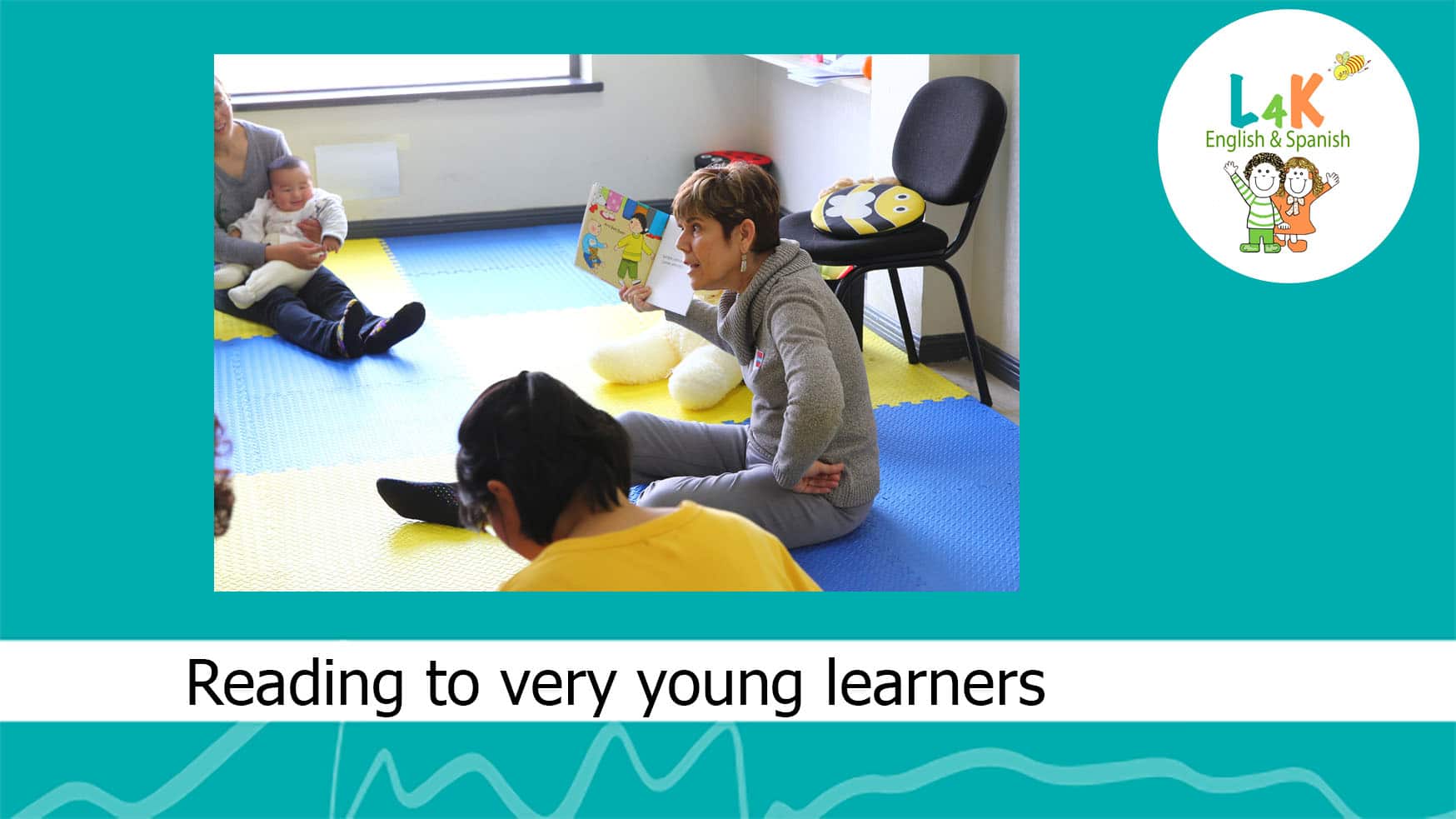Reading to very young learners is an effective and enjoyable way to expose them to a foreign language. Children of all ages love to be read to.

When you read out loud, you are teaching about communication, and helping young children build their listening and memory skills. You are giving them information about the world. You are introducing them to concepts and vocabulary in a fun way, and you are helping them develop skills in the target language by imitating sounds, recognizing images, and learning words. Moreover, children will not just “learn” the words, they will immediately see how the words are used and hear them in a meaningful context. This is so much more beneficial to the children in your group than simply memorizing a list of words.
Stories are perfect for teaching young EFL/ESL learners because children already love stories and are already motivated at the thought of listening to one.
Reading invites children to look, point, touch, and answer questions — all of which promote social development and thinking skills.
Stories play a crucial role in children’s language-learning, not only because of children’s natural interest in stories, or their appeal to their imagination, but also because stories embody
a narrative structure of discourse which can be useful for
learning more in general.
In your classes Story Time can be an important tool for providing a basis for the development of the target language.

Helpful suggestions for conducting Story Time:
¨ Let children predict Story Time by inviting them to help you set the story blanket.
¨ Help everyone find a comfortable space.
¨ Make sure everyone can see the book.
¨ Present the book with lots of enthusiasm.
¨ Read the title and author.
¨ Talk about the pictures on the front page.
¨ Make sure you look both at the book and the children.
¨ Read slowly and clearly.
¨ Read with expression, open your eyes wide, look surprised and smile.
¨ Use your voice in many ways, pitching it higher or lower, or using different voices and talking excitedly to catch
children’s attention and making the story more interesting.
¨ Use different gestures and motions to keep children interested.
¨ Focus on the illustrations and emphasize the rhythms and rhyming words as you read.
¨ Invite parents and their children to participate by filling in words, using expressive voices, answering easy, basic questions, pretending and role playing.
¨ Invite children to anticipate each page by using a “wonder, what’s next” look on your face.
¨ Ask for understanding as you read the stories. Look for signs that show comprehension, such as a nod or a comment.
¨ Try to present the selections chosen in a different way each time you read them.
¨ Allow your creativity to show through. Make animal sounds, change your voice, sing little songs and, most of all, use gestures. Have fun and invite children to imitate you and have fun as well.
¨ Teach them a song that goes along with the theme of the story.
¨ Teach them actions to go along with the songs.
¨ Let them act out parts of the story.
¨ Provide props and outfits that encourage them to dress up like characters in the story and do things the characters in the story did. So, if the characters in the story decorated cookies, give them some time to decorate cookies.
¨ Have the students draw a picture about their favorite part of the story. Have them show it to the class during
“show and tell.”
¨ Read the same stories over and over again.


